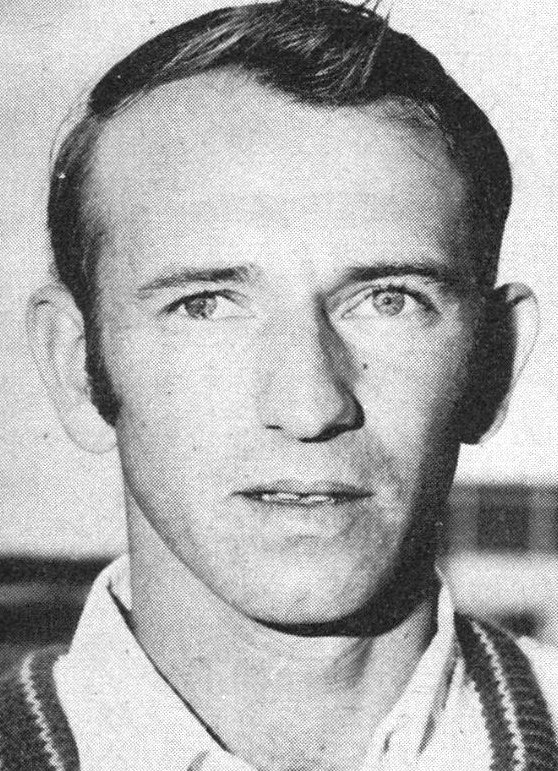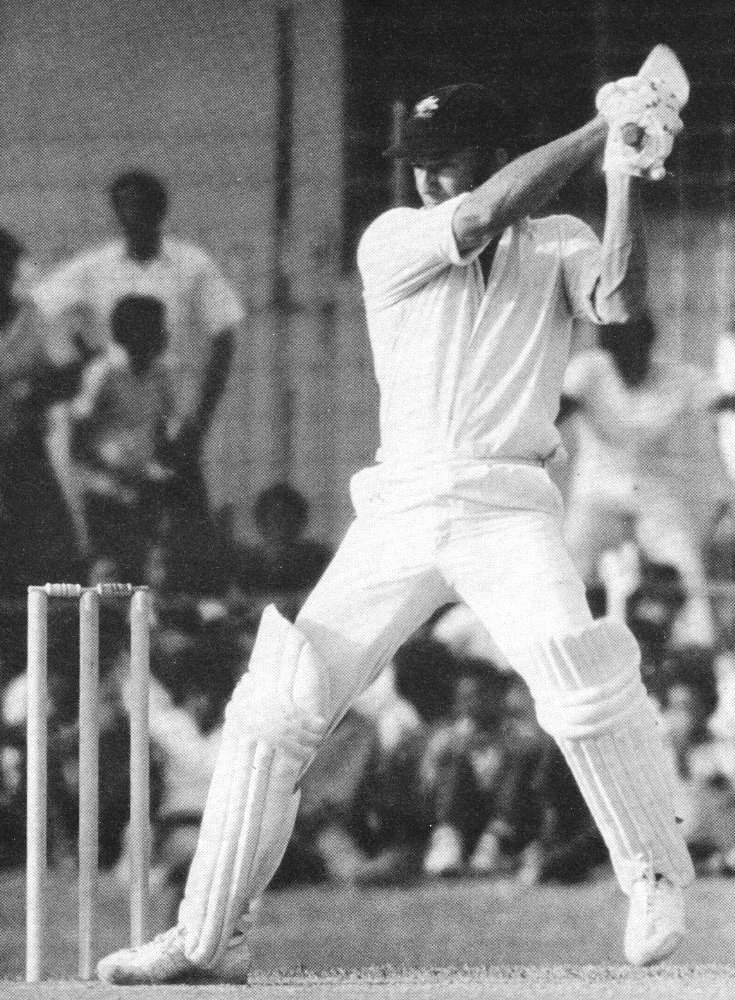Doug Walters had made hardly a run during the weeks leading up to the first Test and was not generally expected to make the Australian XI. When he failed in the first inning of the test, his prospects dimmed further. He has not, of course, appeared in Gallery in all its five years. Nor, more surprisingly, has he ever been one of Wisden’s Five Cricketers of the Year. For the simple reason that his two tours of England have been disappointing, especially the last in 1972, when he averaged less than eight in seven Test innings.
Doug Walters was dropped for the final Test at the Oval, leaving Australia to field for the first time a side devoid of New South Wales players. Those excited claims in 1965 that a batsman with the eye, timing, and power of Don Bradman had arrived had never seemed so ridiculous to the prosecution.
The defense, claiming that Doug Walters is a world-class batsman who has merely had to endure, like all champions, occasional barren spells, might reach immediately for the evidence that many judges would consider flameproof (whisper it, for some walls have the ears of aesthetes) figures! At the start of the series, he had batted eighty times for Australia, making 3633 runs.
Doug Walters had eleven centuries, at an average of 50.46. That, at least, deserves a refrain against England alone; his figures were 1180 runs (three centuries) at 36.90, but at the start of the 1972 disaster, they were 11, 26 at 45. Victor Trumper, Ranji, Fry, and Denis Compton all had series they would prefer to forget. It is futile to pretend that he is at home on English pitches. In the coming summer, in his thirtieth year, he may yet be able to redress the balance in the four Tests in England.
As much as he has been fair, he has stated that good English pitches are better than average Australian pitches for batting. The ball comes off a bit more slowly, giving a little extra time in which to adjust a stroke. The ability to play across the line regularly can be crucial for a man who frequently crosses the line. Meanwhile, his remarkable ability has been demonstrated at home, in India, in South Africa (moderately), in the West Indies, and in New Zealand, where only last March he hit a staggering unbeaten 104 in less than three hours in a Test at Auckland.
Fast left-arm bowler Richard Collinge was too much for most of the Australians on a damp pitch, which yielded 18 wickets on the day. A year earlier, he averaged 71 against the West Indies, his 112 at Port of Spain taking only 148 minutes and attracting all the superlatives. He made a hundred between lunch and tea on the first day. This was followed by 102 not out in the previous Test and 55 and 108 not out against Trinidad. So not all his stirring international deeds have been in the distant past. His first Test match, just before his 20th birthday, was in Brisbane, against Mike Smith‘s England side. He made 155.
Kevin Douglas Walters made another century in the second Test, at Melbourne, and averaged 68 for the series. Two years later, as 2783873 Private Walters, K. D., he averages 127 in two Tests against the touring Indians. He scored his 1000th Test run in only his 11th Test on the 1968 tour of England. Later that year, he scorched 699 runs (average 116.5) against the West Indies, climaxing the rubber with 242 and 103 at Sydney.

There is no request for forgiveness for this torrent of statistics, so the defense may want to rest or adjourn after this. He was born to parents who ran a dairy farm on December 21, 1945. One day and many years later, Sir Robert Menzies and Senator Bill O’Reilly became two other distinguished Australians.
All three were bush children Walters from the Dungog area, not far from Maitland, which is C. G. Macartney country. Young Doug Walters, guided unobtrusively by his father and playing his cricket on the verandah and later on on a pitch rolled out of ant beds, was a prodigious wicket-taker while in short pants, chalking up such outrageous figures as 9 for 8, 9 for 4, and 8 for 7 for the Police Boys Club.
Soon he developed a particular fascination with Anglo-Australian Test cricket—a fascination that is with him still. What finally fired his ambition to play for Australia was the sight of 19-year-old Graeme Pollock blasting a century for South Africa at Sydney in 1963–64, although Walters himself was already ascending the magic ladder. In the previous season, he was flown down to Sydney as a late replacement in the NSW Colts XI against Queensland.
Doug Walters came in at number seven, a slight figure with an incongruous large blue cap propped up by his ears, and scored 140 not out. One ball was pulled into the lake outside the Sydney No. 2 ground. He was chosen for New South Wales, made 50 in his second innings (believing to this day that Wes Hall, for Queensland, refrained from bowling him a bouncer), and scored 60 in the next match. His first century came the following year quickly followed by another. He was on his way.
In 1964-65 Doug Walters pulled out of a difficult sequence by adding 378 for the second wicket at Adelaide with Lyn Marks—the second-highest of all partnerships in the 82-year history of the Sheffield Shield. Walters made 253 runs and continued on to take 7 for 63. He was still only nineteen years old. His Test career burst forth the next season, and he played in 35 Tests straight for which he was available (National Service kept him from several, including a tour of South Africa) before being dropped at The Oval in 1972.
Even in that personal dark hour, his character showed through. Though his heart must have been sinking, he played to the tour selectors in the interests of team spirits: beauty! I won’t have to be up early for nets!’
The team has benefited from his wry humor on many occasions. He once broke the first-morning tension of a Test match when there were several edgy newcomers in the dressing room by pushing his legs into his shirt sleeves and trying to pull his flannels over his head, blurting out, Eric Sykes-style: ‘Nervous? Who’s nervous? Not me!’
That humor was tested often enough when he was given the state captaincy at 22 and allegedly asked two years later to issue a statement that it was too much for him and to give it up (he now leads the side once more). When the Hessian stand-covers flared up in flames, a hundred bottles cascaded around him in the outfield at Bombay. When he was singled out by stone-throwing mobs in Calcutta who thought he had fought against Asians in Vietnam (his Army service had actually taken him only as far north as Queensland),.
Therefore when he was caught for 74 off an apparent no-ball in a Test at Durban only to find that the umpire had stifled his call when his inelegant efforts to play short-pitched balls from Mike Procter and Graeme Pollock and Lever and Snow brought heaps of derision down upon him. He has been tested in this season of 1974-75, up to the point where he came in on the fourth afternoon at Brisbane with all to lose.
Doug Walters hooked, pulled to the sparsely-inhabited mid-wicket area, and drove handsomely, if with plenty of right shoulders until Australia had the advantage enough, and he had 62 welcome runs. If Australia is to regain the Ashes it seems likely that Doug Walters will have a good deal to do with the victory.
